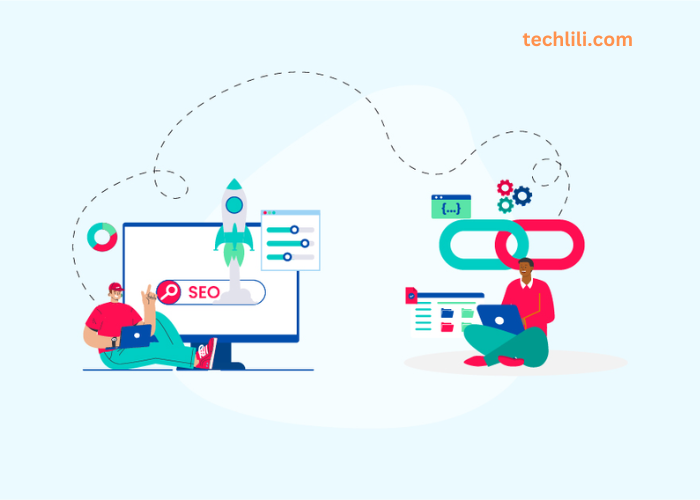Maximizing Business Efficiency: Key Strategies for Growth

In today’s competitive business environment, maximizing efficiency is a critical factor for growth and long-term sustainability. Business leaders and managers must continuously seek innovative ways to streamline operations, reduce costs, and enhance productivity. This article explores key strategies that businesses can employ to maximize efficiency and unlock growth opportunities. Whether you’re a startup or an established enterprise, these approaches are applicable across all industries.
Why Business Efficiency Matters
Before diving into strategies, it’s important to understand why business efficiency is crucial for growth. Efficient businesses tend to:
- Reduce Costs: Efficient operations help eliminate unnecessary expenses, allowing businesses to allocate resources more effectively.
- Increase Productivity: Streamlined processes lead to improved employee performance and higher output levels.
- Enhance Customer Satisfaction: When businesses are efficient, they can deliver faster, higher-quality services or products, which improves customer satisfaction.
- Strengthen Competitiveness: Efficient businesses can offer better value at lower costs, making them more competitive in the market.
For companies to thrive, they need to focus on both short-term improvements and long-term strategic goals. Maximizing efficiency is not only about doing more with less but also about creating a culture of continuous improvement.
Key Strategies for Maximizing Business Efficiency
1. Streamline Business Processes
One of the most effective ways to improve business efficiency is by streamlining business processes. This involves identifying bottlenecks, eliminating redundancies, and optimizing workflows.
Map and Analyze Processes
Start by mapping out your business processes to identify areas for improvement. Use process mapping tools and techniques, such as flowcharts or value stream mapping, to visualize each step of your operations. Once mapped, analyze each process to determine its effectiveness and identify inefficiencies.
Automate Repetitive Tasks
Automation tools can handle routine tasks such as data entry, inventory management, and customer support. By automating these tasks, you free up valuable time for employees to focus on more strategic activities. Investing in automation technologies like robotic process automation (RPA), artificial intelligence (AI), and machine learning (ML) can significantly improve your business’s overall efficiency.
2. Adopt Lean Management Principles
Lean management is a philosophy that focuses on minimizing waste while maximizing value. It originated from the Toyota Production System and has since been adopted by businesses worldwide.
Identify and Eliminate Waste
In lean management, waste is defined as any activity that consumes resources but doesn’t add value. Waste can take many forms, including overproduction, unnecessary transportation, excessive inventory, waiting times, and defects. Conduct regular audits to identify waste in your business operations and take steps to eliminate or reduce it.
Empower Employees
Empower your employees to identify inefficiencies and propose solutions. Encourage a culture of continuous improvement where employees feel comfortable suggesting ways to streamline operations and improve workflows. This collaborative approach can result in more innovative solutions and better operational efficiency.
3. Invest in Technology and Innovation
Technology is one of the most powerful tools for improving business efficiency. By adopting new technologies, businesses can automate tasks, enhance collaboration, and gain insights into performance metrics.
Implement an Integrated Software System
An integrated software system, such as an Enterprise Resource Planning (ERP) system, can unify various business functions, including finance, inventory, sales, and human resources, into one cohesive platform. This reduces the time spent managing multiple systems and helps ensure consistency and accuracy across departments.
Leverage Data Analytics
Data analytics can provide valuable insights into your business performance, enabling you to make data-driven decisions. By analyzing customer behavior, sales trends, and operational metrics, you can identify opportunities to optimize processes and drive growth. Business intelligence (BI) tools such as Tableau and Power BI can help you analyze data and visualize key metrics.
Adopt Cloud-Based Solutions
Cloud computing offers businesses flexibility and scalability. By moving to cloud-based solutions, businesses can reduce infrastructure costs, improve collaboration, and ensure data security. Cloud technologies enable teams to access documents and applications from anywhere, which is particularly valuable in today’s remote work environment.
4. Focus on Employee Training and Development
Efficient businesses are built on the foundation of a skilled and motivated workforce. Investing in employee training and development can lead to increased productivity, improved morale, and lower turnover rates.
Invest in Skills Development
Ensure that your employees have the necessary skills and knowledge to perform their jobs effectively. Offer regular training sessions to help employees develop both technical and soft skills. This investment in professional development can enhance performance and contribute to overall business efficiency.
Encourage Cross-Training
Cross-training employees enables them to perform multiple roles within the company. This not only improves operational efficiency by providing more flexibility in staffing but also helps employees develop new skills. Cross-training also ensures business continuity, as employees can step into different roles in case of absence or turnover.
5. Optimize Resource Allocation
Efficient resource allocation is essential for maximizing business efficiency. By effectively managing your financial, human, and physical resources, you can reduce waste and increase profitability.
Use Resource Management Tools
Resource management tools can help businesses optimize the allocation of human and physical resources. These tools allow managers to track and allocate resources based on project requirements, deadlines, and availability. Software like Microsoft Project and Smartsheet can be used to plan, monitor, and manage resources effectively.
Prioritize High-Impact Projects
Not all projects are created equal. Some projects will have a greater impact on your business’s growth and profitability. Use data-driven decision-making to prioritize projects that provide the highest return on investment (ROI). By focusing on high-impact projects, you can ensure that your resources are being used most effectively.
6. Improve Communication and Collaboration
Effective communication and collaboration are key to maximizing efficiency within teams and across departments. Poor communication can lead to misunderstandings, delays, and errors that reduce productivity.
Foster Open Communication Channels
Encourage open communication by creating an environment where employees feel comfortable sharing ideas, feedback, and concerns. This can be achieved through regular team meetings, suggestion boxes, and open-door policies. Transparent communication helps reduce confusion and align team members with business objectives.
Use Collaboration Tools
Invest in collaboration tools like Slack, Microsoft Teams, and Zoom to facilitate communication across remote and in-house teams. These tools help streamline communication, share files in real time, and schedule virtual meetings, improving overall team collaboration and efficiency.
7. Track Performance and Continuous Improvement
Measuring performance is essential for identifying areas of improvement. By tracking key performance indicators (KPIs) and other business metrics, you can evaluate the effectiveness of your strategies and make data-driven adjustments as needed.
Set Clear KPIs
Establish clear KPIs that align with your business goals. These might include metrics like customer satisfaction, production rates, profit margins, and employee performance. By regularly monitoring KPIs, you can track progress and make informed decisions to improve efficiency.
Foster a Culture of Continuous Improvement
Encourage a culture of continuous improvement where employees are always looking for ways to do things better. Use techniques like Kaizen (a Japanese term meaning “change for better”) to promote small, incremental improvements over time. Over time, these small changes can result in significant gains in business efficiency.
Overcoming Challenges to Maximizing Efficiency
While the strategies mentioned above can lead to substantial improvements in business efficiency, there are several challenges companies may face in the process:
Resistance to Change
Employees may be resistant to adopting new technologies or changing established processes. Overcome this resistance by communicating the benefits of the changes clearly, offering adequate training, and involving employees in the decision-making process.
Budget Constraints
Some efficiency strategies, particularly those involving new technologies or automation, may require a significant investment. If you’re working with a limited budget, prioritize cost-effective solutions such as process improvements, employee training, and better resource management.
Data Security Concerns
As businesses embrace digital transformation, data security becomes a critical concern. Ensure that you implement strong cybersecurity measures, such as encryption, firewalls, and regular security audits, to protect sensitive information.
Conclusion
Maximizing business efficiency is not a one-time effort but a continuous journey. By streamlining processes, adopting new technologies, empowering employees, and focusing on resource optimization, businesses can improve their productivity, reduce costs, and ultimately drive growth. While challenges may arise, with the right strategies and mindset, companies can navigate these obstacles and position themselves for long-term success.
Embrace the principles of efficiency today, and watch your business grow to new heights.







